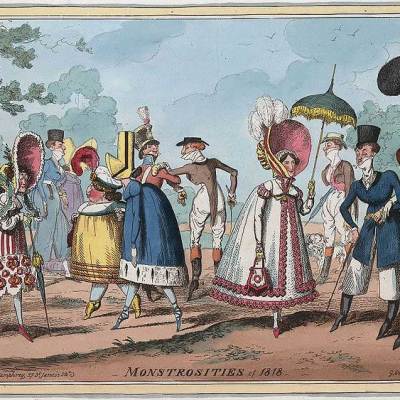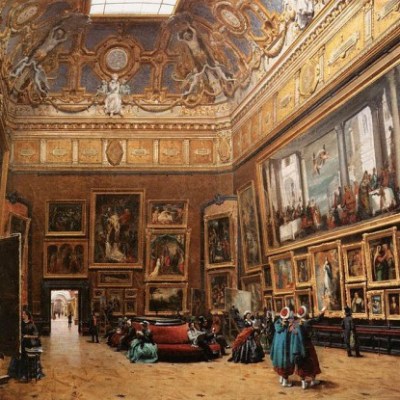Christopher S. Wood has long been known as both an art historian and historiographer, publishing an early book on Albrecht Altdorfer and a translation and commentary on the Vienna School of art history that are the major reference points on the subjects. Wood is also one of very few recent major art historians who have spent their careers grappling with the elusiveness of the meanings of works of art. Both Forgery, Replica, Fiction (2008) and Anachronic Renaissance (2010, co-authored with Alexander Nagel) try to do justice to the plurality of works that refer to multiple historical moments and exist across time – thus opposing the widespread ‘historicist assumption that every event and every object has its proper location within objective and linear time’.
This new book begins with an apparently simple description of the art historian’s purpose. The art historian relocates the work of art in its historical moment, closing the gap between present and past. Through this historical decoding the viewer is brought to the threshold of the work, now once again opened to interpretation or aesthetic engagement. However, it soon becomes clear that things are not so simple. The art historian does not simply decode or explain; they are the figure ‘who makes you see [the work] again as a work of art’. That attempt to get closer to the work of art, meanwhile, makes all the clearer that what Wood describes as the ‘dreamwork carried out by any image’ constantly undercuts the desire to decode or explain: the artwork is always refusing its reduction to any one historical moment, cause, or evidentiary function.
Wood provides a largely familiar arc of the discipline, ranging from Pliny through to contemporary art, but really focusing on Western Europe (and, later, the United States) from the mid 1400s through to the ‘new art history’ of the 1970s. Between those dates the analysis proceeds individual by individual, with chapters for the most part organised by date ranges of 50, 20, or 10 years.
The really striking aspect of the book lies rather in the detail and originality with which the histories within this arc are narrated. We see this in Wood’s introductory categorisation of three approaches to art history. Annals are the roll-calls of great artists made famous by Vasari’s Lives of the Artists, and still valued by those artists of the present who desire no more from the historian than their own memorialisation. Typologies involve a now unfamiliar form of chronological instability, seeing not fixed moments of creation in linear time, but a continuity that refers back to a lost or mythic original. This way of thinking is often found in artworks themselves, and since Vasari’s century has been increasingly abandoned in written histories (if not by those modern tourists whose gaze passes over many later restorations and recreations as if nothing has ever changed). Fables, finally, are those ‘ironic’ forms of history writing that ‘redistribute praise and blame’. Modern art history is characterised by its constant ‘ironic’ readjustments of value of the fable, which ‘finally tend toward a total relativity of judgment’.
These modes are regularly referred to, but many other patterns are implied in the book’s extraordinarily wide-ranging prehistory and history of the discipline. One major story – or counterfable – concerns scholarship’s alienation from art, seen in the rise and inevitable inadequacies of a modern art history founded on empiricism, relativism, and historicist contextualism. In this story it is the shattering effect of empiricism from the mid 1600s onwards from which the discipline has never recovered. Empiricism declares that art cannot in fact be a source of knowledge, yet demands that scholarship produce knowledge as its primary task. The relativism that has characterised the discipline since the 19th century, meanwhile, a seeming advance on the past in treating every work and age on its own terms, in fact requires another reduction or taming of art. In order to be seen as equal in all times and places the functions and existential commitments of art must be papered over or forgotten in the 19th-century scholar’s levelling accounts of ‘art’ across time and place.
Most striking of all is the problem of historicism and contextualism, already visible in Winckelmann (albeit, in Wood’s words, ‘so empty as to be worthless’) and dominant by the mid 19th century. The problem can already be found in the ‘weak concept of art’ in Goethe’s writings of the 1810s. The art historian now examines art on its own terms, expecting in every case that art will reveal its own period’s expression of itself. Yet this apparently nonevaluative form of analysis ends up celebrating primarily those works of art which seem best to reflect their moments. The social history of art – I would add – so dominant in the present, has never really found its way past this problem.
Wood’s history is one of only a handful of book-length attempts to offer a synthetic treatment of the history of art history – he notes six published between 1924 and 2001. Owing to its extraordinary range and original insights, it is destined to become the standard work for many years to come. This makes it all the more significant that this is an unusual history. It is sometimes tendentious, usually polemical but often coy: largely refusing to name art historians of the last 50 years even when Wood seems to have individuals in mind, and offering no clear recommendations for an art history that would avoid the problems identified.
My summary of the book does no more than hint at the many paths it takes up until 1900, and says nothing of its analysis of the partially corrective (but problematic) rise of formalism, the modernist split, and the divergence of contemporary art and art history, let alone the many detailed analyses and reputational reassessments along the way that are likely to surprise even experienced historiographers. In this history that is in fact many histories, the reader is left to draw their own conclusions about the patterns that emerge in the past, and the lessons that might be drawn for the present and future.
A History of Art History by Christopher S. Wood is published by Princeton University Press.
From the November 2019 issue of Apollo. Preview and subscribe here.



